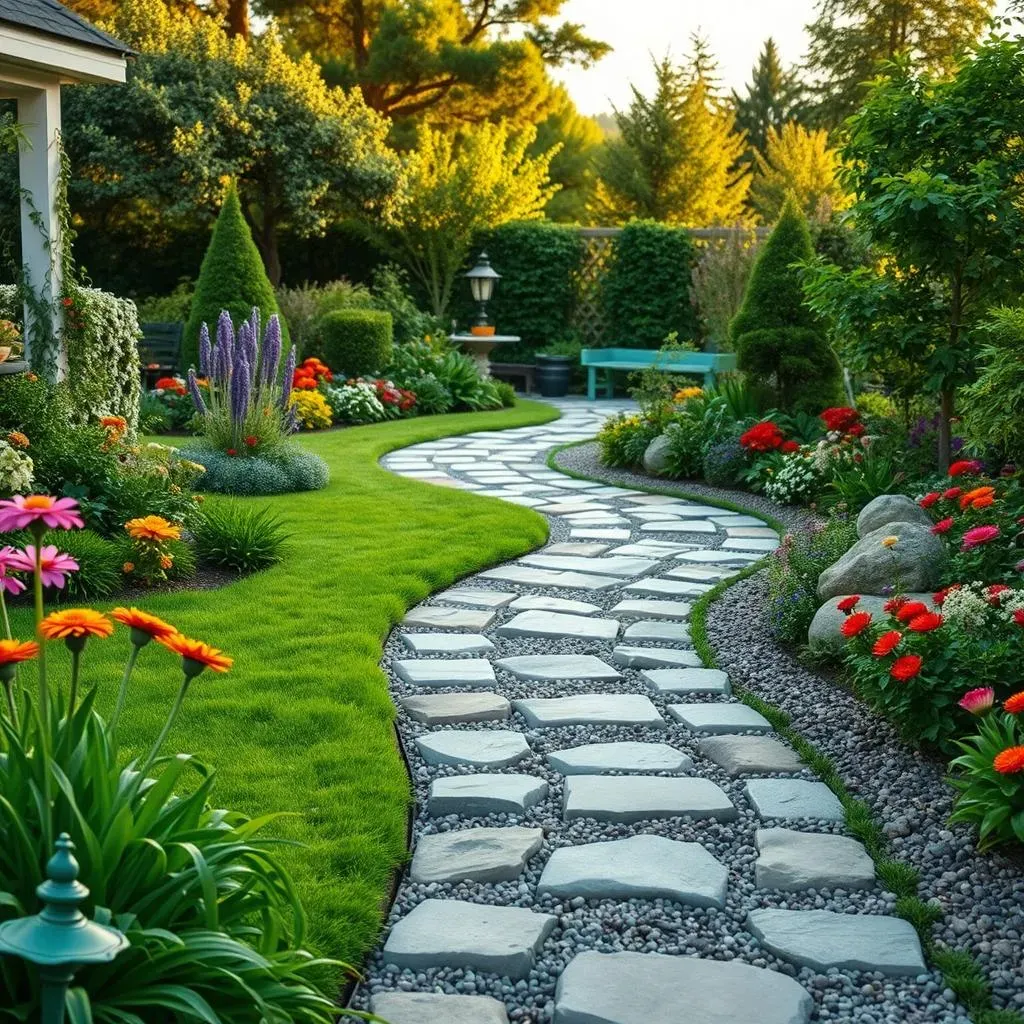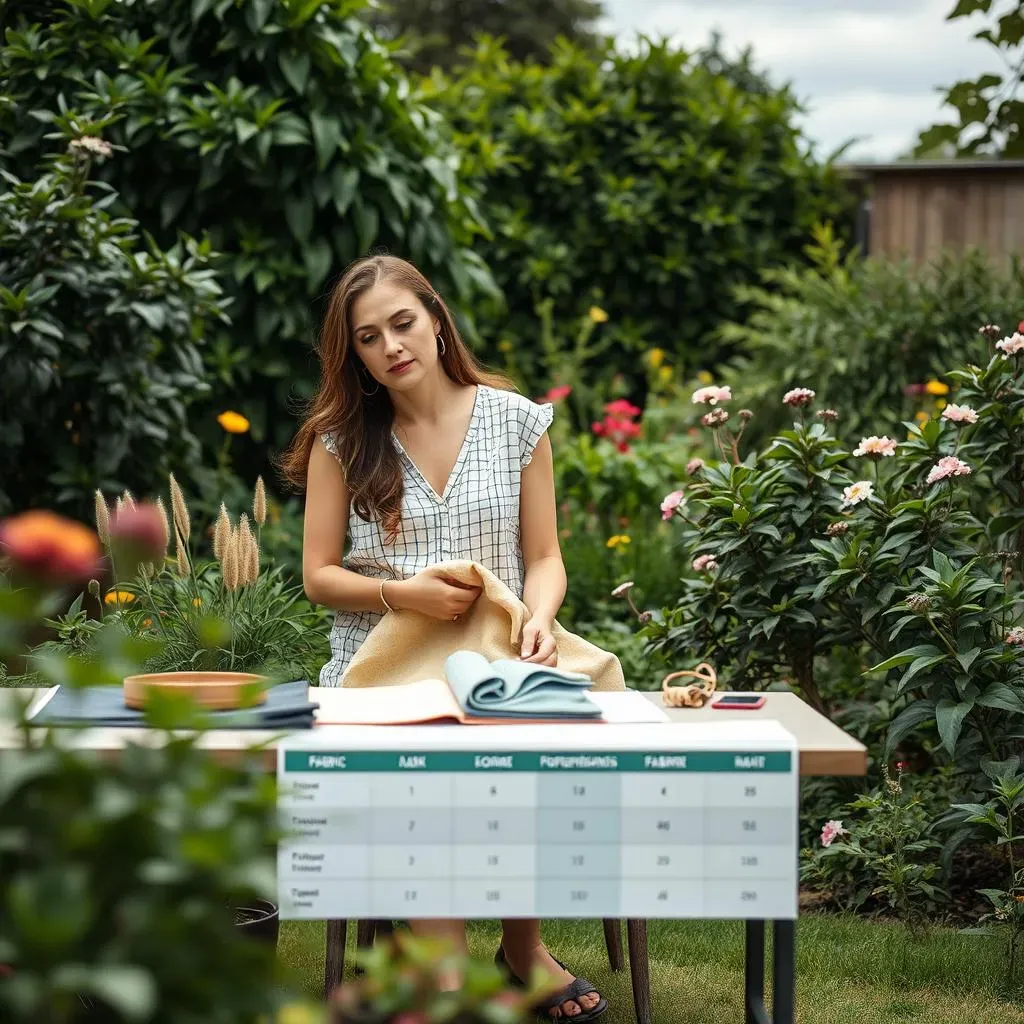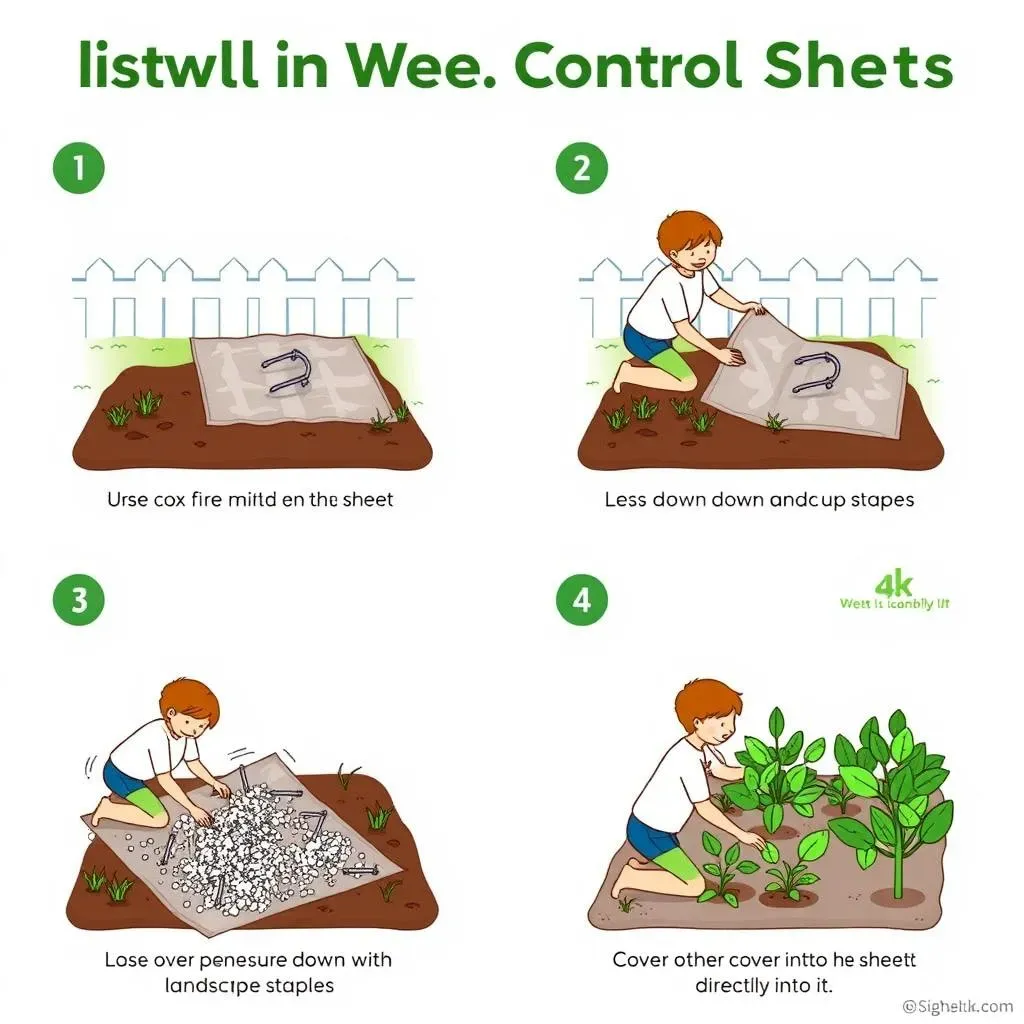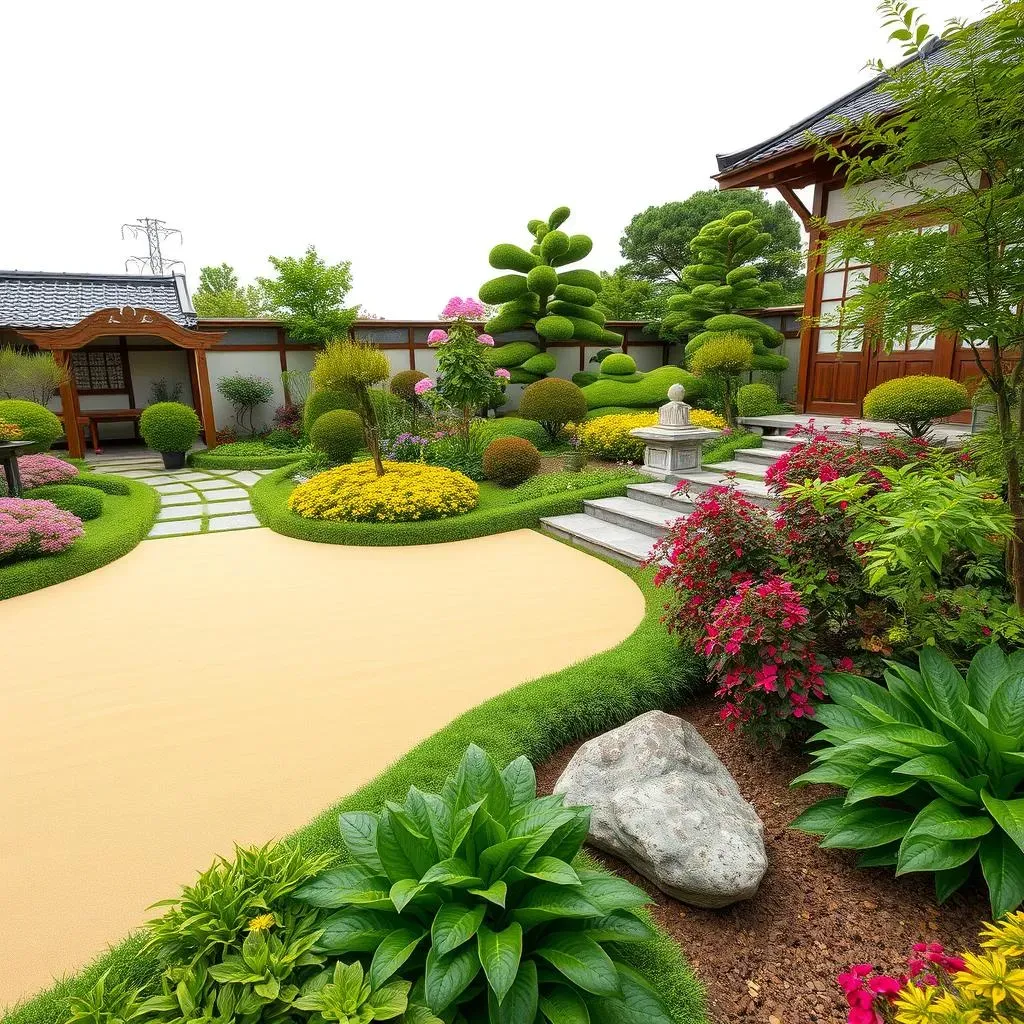Table of Contents
Are you dreaming of a gorgeous garden but dread the endless battle with weeds? You're not alone! Many of us love the idea of lush greenery and vibrant flowers, but the reality of constant weeding can be a real buzzkill. That's where the magic of "庭のデザイン 防草シート" (garden design weed control sheets) comes in. This isn't just about slapping down some fabric and calling it a day; it's about creatively integrating weed control into your overall garden design. We're going to explore how these simple sheets can be a game-changer, not just for keeping weeds at bay, but for enhancing the beauty of your outdoor space. We'll uncover the basics of how they work, then dive into some cool ideas for using them in your garden designs. Get ready to learn how to choose the right sheet for your needs, and we'll even walk through a step-by-step installation process. Let's transform your garden into a weed-free paradise, shall we?
Understanding the Basics of Weed Control in Garden Design

Understanding the Basics of Weed Control in Garden Design
Why Weeds are a Garden Nuisance
Okay, so you're probably thinking, "Weeds? Seriously?" But trust me, understanding why these little green invaders are such a pain is the first step to winning the garden battle. Weeds aren't just unsightly; they're like the freeloaders of the plant world. They steal all the good stuff – water, sunlight, and nutrients – that your prized plants need to thrive. Imagine trying to share a single slice of pizza with a bunch of hungry teenagers; that's what your flowers are up against when weeds are around. And they're not polite about it, they spread like wildfire, making your garden look messy and impacting the health of your other plants. So, yeah, weeds are a big deal and understanding their impact is crucial.
It's also important to know that not all weeds are created equal. Some are annuals, popping up for a single season, while others are perennials, coming back year after year like a bad penny. Knowing what you're dealing with helps you choose the right strategy. For example, a quick hoeing might take care of annual weeds, but a deep-rooted perennial might need a more serious approach, like a good quality weed control sheet. It’s like knowing whether you need a fly swatter or a bazooka, you know? Understanding the enemy is half the battle.
How Weed Control Sheets Work
So, how do these weed control sheets actually work? It’s pretty clever, actually. Think of them as a barrier, a bouncer at the club for weeds. They’re usually made of a woven or non-woven fabric that blocks sunlight from reaching the soil. Sunlight is like the fuel for weeds, without it, they can’t grow. These sheets are breathable, allowing water and air to pass through to your plants' roots, while preventing weeds to break through. It's like having a one-way door for the bad guys, sneaky right?
But they’re not just a simple barrier. A good weed control sheet also helps to stabilize the soil, preventing erosion and helping to retain moisture. This means your plants get all the good stuff they need, while the weeds are left in the dark. It’s like giving your plants VIP treatment while the weeds are stuck in the line. The best part is that they’re a long-term solution, reducing the need for constant weeding and saving you time and effort. It’s a win-win.
Weed Type | Growth Cycle | Control Method |
|---|---|---|
Annual Weeds | One Season | Hoeing, Mulching, Weed Control Sheets |
Perennial Weeds | Multiple Seasons | Deep Digging, Weed Control Sheets, Herbicides (as a last resort) |
Creative Ways to Incorporate Weed Control Sheets in Your Garden Design

Creative Ways to Incorporate Weed Control Sheets in Your Garden Design
Okay, so you've got the lowdown on why weed control sheets are a must, but let's get to the fun part: how to actually use them to make your garden look awesome. It's not just about hiding them under mulch; you can get creative! Think of weed control sheets as the canvas for your garden masterpiece. One cool idea is to use them as a base for pathways or patios. Lay them down, cover with gravel, stones, or even pavers, and boom – instant weed-free walkway! It's like creating a super-powered floor that weeds can't break through, plus it looks neat and tidy. No more mud puddles or random weeds popping up between your stones, it's a win-win.
Another fantastic way to use them is to create defined planting beds. Instead of just planting straight into the ground, use the sheets to outline your flower beds or vegetable patches. This not only keeps weeds out but also gives your garden a structured, polished look. It's like having a personal garden designer on your side, making sure everything is in its place. You can also get crafty and cut the sheets into different shapes, creating unique patterns and designs in your garden. It's all about thinking outside the box and using these sheets as a design element, not just a utility. Who knew weed control could be so stylish?
And if you're feeling a bit more adventurous, why not use weed control sheets to create a layered garden? Imagine building up different levels using soil and the sheets as a barrier between each level. You could have a lower level with herbs, a middle level with flowers, and a top level with taller plants. It's like a multi-tiered cake, but for plants! Not only does this look visually stunning, but it also makes it easier to manage each layer. Plus, the sheets prevent the soil from mixing and the weeds from traveling. It's like having a perfectly organized garden apartment complex where everyone has their own space.
Don't forget about using them in containers, too! Line the bottom of your pots with weed control sheets to prevent soil from washing away and weeds from sneaking in. It's like giving your plants a cozy little home that's safe from unwanted guests. And if you have a sloped garden, using these sheets can also help to prevent soil erosion, keeping your plants and soil in place. It's like having a built-in retaining wall for your garden, preventing everything from sliding downhill. So, as you can see, the possibilities are endless. With a little imagination, you can transform your garden into a beautiful, weed-free oasis using these versatile sheets.
Design Idea | Description | Benefit |
|---|---|---|
Pathways/Patios | Use under gravel, stones, or pavers | Weed-free, tidy look |
Defined Beds | Outline flower beds or vegetable patches | Structured, polished look |
Layered Garden | Create different levels using sheets | Visually stunning, easy to manage |
Containers | Line the bottom of pots | Prevents soil loss, keeps out weeds |
Sloped Gardens | Use to prevent soil erosion | Keeps soil and plants in place |
Choosing the Right Weed Control Sheet for Your Garden Design

Choosing the Right Weed Control Sheet for Your Garden Design
Understanding Fabric Types
Okay, so you're ready to pick out your weed control sheet, but hold up! Did you know there's more than one type? It's not just a one-size-fits-all situation. We've got woven and non-woven fabrics, and they're each suited for different things. Woven fabrics are like the tough guys of the weed control world. They're made of tightly woven strands, which makes them super strong and durable. Think of them as the body armor for your garden, perfect for areas that see a lot of foot traffic or for under heavy stones or pavers. They're great for pathways or patios where you need something that can handle a bit of a beating. But, they can be a bit less permeable for water and air, so you need to keep that in mind for your plants. It's like choosing between a tank and a jeep, depending on the terrain.
On the flip side, we have non-woven fabrics. These are more like a soft blanket for your soil. They're made of fibers that are bonded together, not woven, which makes them more breathable and water-permeable. They're great for planting beds and under mulch, allowing your plants to get all the air and water they need. They're not as tough as woven fabrics, so they're not the best choice for high-traffic areas, but they're perfect for creating a healthy environment for your plants to thrive. It's like choosing between a cozy blanket and a sturdy raincoat, depending on the weather. So, think about where you'll be using the sheet, and that will help you choose the right type.
Fabric Type | Durability | Permeability | Best Use |
|---|---|---|---|
Woven | High | Lower | Pathways, patios, under heavy materials |
Non-woven | Medium | Higher | Planting beds, under mulch |
Considering Thickness and Material
Now that you've got the fabric types down, let's talk about thickness and material. It's not just about picking the heaviest or thickest sheet, it's about finding the right balance for your garden. Thicker sheets are generally more durable and better at blocking weeds, but they can also be less permeable, which might not be ideal for all plants. It’s like choosing between a thick winter coat and a light jacket, depending on the season. The material of the sheet also matters. Some are made of polypropylene, which is a tough and durable plastic. Others are made of biodegradable materials, which are more eco-friendly but might not last as long. It's like choosing between a plastic water bottle and a glass one, depending on your priorities.
You’ll also want to consider the color of your weed control sheet. Black sheets are the most common, as they block out the most sunlight. But if you're planning on leaving the sheet exposed, a brown or green sheet might blend in better with your garden, it's like choosing between a black t-shirt and a colorful one, depending on your style. And don't forget about the size of the sheet you need. Measure your garden area carefully and buy a sheet that's large enough to cover it, with a little extra to spare. You don't want to end up with a sheet that's too small. It's like making sure you have enough wrapping paper before you start wrapping a gift, you know? So, take your time, consider all these factors, and pick the right weed control sheet for your garden needs.
"The best weed control method is a combination of prevention and action. Choose the right tools for the job and you’ll be golden." - Some Gardener
StepbyStep Guide: Installing Weed Control Sheets for Stunning Garden Design

StepbyStep Guide: Installing Weed Control Sheets for Stunning Garden Design
Alright, so you've picked out the perfect weed control sheets and you're itching to get started, right? Let's get down to business with a step-by-step guide that's so simple, even a kid could do it. First things first, preparation is key. Clear the area where you'll be laying the sheets. That means getting rid of any existing weeds, rocks, or debris. Think of it as prepping a canvas before painting, you want a nice, clean surface to work with. Use a rake or a hoe to smooth out the soil and make sure it's relatively level. If you're dealing with a particularly uneven area, you might need to add some topsoil to fill in any dips or holes. It's like building the foundation of a house, you need a solid base for everything else.
Next, it's time to roll out your weed control sheet. Lay it down over the prepared area, making sure it covers the entire space you want to protect. If you're using multiple sheets, overlap them by a few inches to prevent weeds from sneaking through the cracks. It's like laying down a giant puzzle, making sure all the pieces fit together. Now, secure the edges of the sheet using landscape staples or pins. These little guys will keep the sheet from shifting or blowing away in the wind. It's like putting a seatbelt on, making sure everything stays in place. If you're using the sheet for a pathway or patio, cut holes where you want to place your plants, then cover the sheet with gravel, stones, or pavers. If you're using it for a planting bed, cut holes where you want your plants to go and plant them right in. It’s like customizing a suit, making sure it fits perfectly.
Step | Action | Why |
|---|---|---|
1 | Clear the area | Remove weeds, rocks, debris for a clean surface |
2 | Level the soil | Smooth surface for even sheet placement |
3 | Roll out the sheet | Cover the entire area, overlapping edges |
4 | Secure the edges | Use staples or pins to prevent shifting |
5 | Cover or plant | Cover with gravel, stones, or plant directly |
